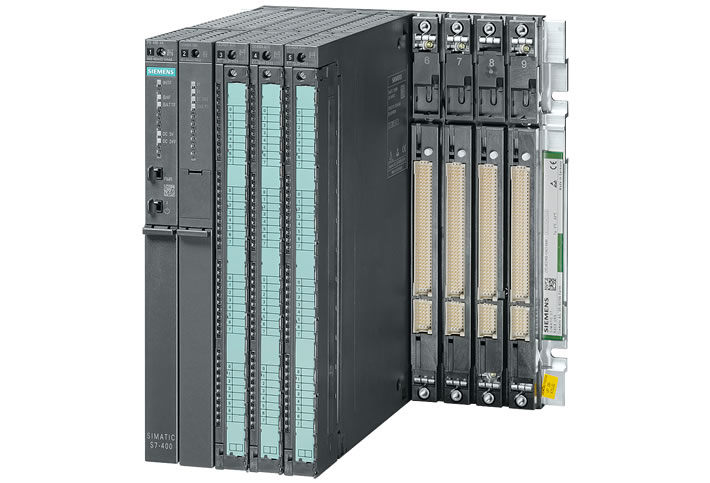1. EXECUTIVE SUMMARY
-
CVSS v3 8.2
- ATTENTION: Exploitable remotely/low skill level to exploit
- Vendor: Siemens
- Equipment: S7-400 CPUs
- Vulnerabilities: Improper Input Validation
2. RISK EVALUATION
Successful exploitation of these vulnerabilities could crash the device being accessed which may require a manual reboot or firmware re-image to bring the system back to normal operation.
3. TECHNICAL DETAILS
3.1 AFFECTED PRODUCTS
Siemens reports that the vulnerabilities affect the following SIMATIC S7-400 products:
- S7-400 v6 (including F) and below all versions,
- S7-400 PN/DP v7 (including F) all versions,
- S7-400H v4.5 and below all versions,
- S7-400H v6 all versions, and
- S7-410 all versions prior to v8.2.1
3.2 VULNERABILITY OVERVIEW
3.2.1 IMPROPER INPUT VALIDATION CWE-20
Specially crafted packets sent to Port 102/TCP via Ethernet interface, via PROFIBUS, or via multi-point interfaces (MPI) could cause the affected devices to go into defect mode. Manual reboot is required to resume normal operation.
CVE-2018-16556 has been assigned to this vulnerability. A CVSS v3 base score of 7.5 has been calculated; the CVSS vector string is (AV:N/AC:L/PR:N/UI:N/S:U/C:N/I:N/A:H).
3.2.2 IMPROPER INPUT VALIDATION CWE-20
Specially crafted packets sent to Port 102/TCP via Ethernet interface via PROFIBUS or MPI could cause a denial-of-service condition on affected devices. Recovery may require flashing with a firmware image.
If no access protection is configured, no privileges are required to exploit this vulnerability.
CVE-2018-16557 has been assigned to this vulnerability. A CVSS v3 base score of 8.2 has been calculated; the CVSS vector string is (AV:N/AC:L/PR:N/UI:N/S:U/C:N/I:L/A:H).
3.3 BACKGROUND
- CRITICAL INFRASTRUCTURE SECTORS: Chemical, Critical Manufacturing, Energy, Food and Agriculture, Healthcare and Public Health, Transportation.
- COUNTRIES/AREAS DEPLOYED: Worldwide
- COMPANY HEADQUARTERS LOCATION: Germany
3.4 RESEARCHER
CNCERT/CC reported these vulnerabilities to Siemens.
4. MITIGATIONS
Siemens recommends implementing the following mitigations:
- Configure protection Level 3 (read/write protection) to mitigate CVE-2018-16557
- Restrict network access to affected devices; restrict network access to Port 102/TCP for Ethernet interfaces.
- For SIMATIC S7-CPU 410 CPUs: Activate field interface security in PCS 7 v9.0, use a SIMATIC CP443-1 Adv. to communicate with ES/OS, and update to Version 8.2.1:
https://support.industry.siemens.com/cs/ww/en/view/109476571
- Apply defense-in-depth:
https://www.siemens.com/cert/operational-guidelines-industrial-security
As a general security measure, Siemens strongly recommends protecting network access to devices with appropriate mechanisms. In order to operate the devices in a protected IT environment, Siemens recommends configuring the environment according to Siemens’ operational guidelines for industrial security (download: https://www.siemens.com/cert/operational-guidelines-industrial-security), and following the recommendations in the product manuals.
For more information on these vulnerabilities and associated software updates, please see Siemens security advisory SSA-113131 on their website:
https://www.siemens.com/cert/advisories
NCCIC recommends users take defensive measures to minimize the risk of exploitation of this vulnerability. Specifically, users should:
- Minimize network exposure for all control system devices and/or systems, and ensure that they are not accessible from the Internet.
- Locate control system networks and remote devices behind firewalls, and isolate them from the business network.
- When remote access is required, use secure methods, such as Virtual Private Networks (VPNs), recognizing that VPNs may have vulnerabilities and should be updated to the most current version available. Also recognize that VPN is only as secure as the connected devices.
NCCIC reminds organizations to perform proper impact analysis and risk assessment prior to deploying defensive measures.
NCCIC also provides a section for control systems security recommended practices on the ICS-CERT web page. Several recommended practices are available for reading and download, including Improving Industrial Control Systems Cybersecurity with Defense-in-Depth Strategies.
Additional mitigation guidance and recommended practices are publicly available on the ICS-CERT website in the Technical Information Paper, ICS-TIP-12-146-01B–Targeted Cyber Intrusion Detection and Mitigation Strategies.
Organizations observing any suspected malicious activity should follow their established internal procedures and report their findings to NCCIC for tracking and correlation against other incidents.
No known public exploits specifically target these vulnerabilities.
Source:
https://ics-cert.us-cert.gov/advisories/ICSA-18-317-02
